One of the most common questions businesses ask before starting app development is the “How long does it take to develop a video streaming app?” On average, it takes 3–12 months, depending on features, complexity, and the chosen development approach.
The demand for video streaming apps has skyrocketed in the last decade. According to recent reports, the global video streaming market was valued at $544.5 billion in 2023 and is expected to grow at a compound annual growth rate (CAGR) of 21% from 2024 to 2030.
Giants like Netflix, Disney+, and Amazon Prime Video have set the stage, but startups and enterprises worldwide are now eager to tap into this booming industry.
In this blog, you will get a clear breakdown of video streaming app development time, real-world insights, and a detailed step-by-step process to help you plan your app effectively.
Average Timeframe to Develop a Video Streaming App
The time it takes to develop a video streaming app depends on multiple factors, like features, platform selection, integrations, and design complexity.
If you want to build a video streaming app from scratch, expect anywhere from 3 months for a Minimum Viable Product (MVP) to 12+ months for a fully featured platform.
Here’s a quick snapshot of the average time and cost to develop a streaming app:
|
App Type |
Features & Scope |
Timeline (Weeks/Months) |
|
Basic MVP |
User registration, video playback, simple UI, and admin panel |
12–20 weeks (3–5 months) |
|
Mid-Level App |
Advanced UI/UX, personalized recommendations, payment gateway, offline downloads |
20–32 weeks (5–8 months) |
|
Full-Featured OTT App |
Multi-platform support (iOS, Android, Web, Smart TV), AI-based suggestions, live streaming, monetization options, strong app security |
32–52+ weeks (8–12+ months) |
The OTT platform development time depends on whether you choose custom development or use a ready-made app tech stack.
Startups aiming for faster results often launch an MVP first, then scale with advanced features.
Step-by-Step Video Streaming App Development Timeline
You might be wondering how long does it take to develop a video streaming app. It usually takes 3–12 months, influenced by various factors influencing development timeline such as app complexity, feature set, design requirements, and third-party integrations.
Before we dive into the detailed process, here’s a quick snapshot of the timeline so you can understand how much time each stage generally takes.
|
Development Stage |
Estimated Duration |
Key Activities |
|
Market Research & Planning |
2–4 Weeks |
Competitor analysis, audience research, choosing monetization model |
|
Defining Features & App Scope |
1–2 Weeks |
Finalizing core features like profiles, search, payments, live streaming |
|
UI/UX Design |
3–5 Weeks |
Wireframes, mockups, branding, interactive UI creation |
|
Backend & Frontend Development |
12–20 Weeks |
App coding, APIs, CDN integration, video storage, authentication |
|
CMS Integration |
2–3 Weeks |
Uploading, categorizing, automating recommendations |
|
Payment Gateway & Monetization |
2–4 Weeks |
Adding SVOD, AVOD, TVOD models + secure payment systems |
|
App Security & Compliance |
2–3 Weeks |
DRM, encryption, authentication, piracy protection |
|
Testing & Quality Assurance |
4–6 Weeks |
Bug fixing, load testing, cross-device & security checks |
|
Deployment & Launch |
1–2 Weeks |
Submit an app to App Store, publish your app on Google Play Store, final server setup |
|
Post-Launch Maintenance & Updates |
Ongoing |
Bug fixes, updates, new features, scaling for more users |
This structured table not only highlights the average time to create a video streaming app but also shows the crucial activities happening at each stage.
Now, let’s dive into the detailed breakdown of every phase to see how these timelines actually play out.
Step 1: Market Research & Planning
The foundation of a successful app begins with thorough research and planning. At this stage, businesses carefully study the best video streaming apps such as Netflix, YouTube, and Disney+ to understand user expectations and market trends.
Market research ensures that the app development roadmap is well-defined, making it a critical phase in the timeline for video streaming app development.
Step 2: Defining Features & App Scope
Once research is complete, the next step is to define the core video streaming app features that will make your platform functional and user-friendly. These may include user registration, profile management, search functionality, live streaming options, and offline downloads.
Each feature directly impacts the OTT app development timeline, as a basic app with fewer features takes less time, while advanced features extend the process.
Step 3: UI/UX Design
Design plays a huge role in user engagement and retention. In this phase, designers design a video streaming app by creating wireframes, prototypes, and interactive mockups.
The complexity of your design requirements will ultimately influence the development timeline, as more advanced visuals and animations may take additional weeks to perfect.
Step 4: App Security & Compliance
Security is non-negotiable when building a streaming platform. To ensure complete video streaming app security, developers implement features such as Digital Rights Management (DRM), encrypted streaming protocols, and multi-level authentication.
Although adding security features may extend the video streaming app development time, they are essential to protect your content, build trust with users, and meet legal compliance requirements.
Step 5: Testing & Quality Assurance
After development, the app undergoes rigorous app testing to ensure a seamless user experience. Quality assurance teams check for bugs, functionality issues, load handling, and cross-device compatibility.
A detailed QA process ensures that the app is reliable and user-friendly before the official launch, reducing risks of poor performance after release.
Step 6: Deployment & Launch
Once testing is complete, submit an app to the App Store and ensure it meets Apple’s strict guidelines, while also preparing to publish your app on the Google Play Store for Android users.
At this stage, businesses can finally showcase their product to the audience and officially complete the development cycle.
By focusing on the above development timeline, you will understand the exact steps and that influence how long it takes to launch a streaming platform.
If you are exploring top live streaming business ideas, following this structured process will give you a clear roadmap to build a competitive and scalable platform.
Factors That Affect Video Streaming App Development Time
When you are asking for “how long does it take to develop a video streaming app,” it should be clear that it varies so much between projects.
There are several factors influencing the video streaming app development timeline and determining how long it takes to build a scalable, engaging, and secure platform.
Let’s break them down:
1. App Complexity and Features
The level of complexity is the single biggest factor in determining development time. A basic MVP (Minimum Viable Product) with essential features such as user registration, video library, search, and playback can be built relatively quickly.
However, if you want advanced functionalities like live streaming, AI-driven recommendations, multi-language support, offline downloads, parental controls, or adaptive bitrate streaming, the timeline stretches significantly.
Timeline of the approach:
-
Basic MVP with core features - 3–5 months
-
Mid-level app with additional features (e.g., ratings, playlists, analytics) - 6–8 months
-
Full-featured OTT platform with advanced AI, offline mode, live streaming - 9–12+ months
2. Design Requirements (UI/UX Complexity)
Design is more than aesthetics; it directly impacts user retention. The process usually begins with app wireframing, where the basic structure and navigation flow are created. This stage is relatively quick if the layout is simple.
However, when businesses require advanced app prototyping with interactive elements, animations, branded color schemes, and cross-platform consistency, the design stage can extend by several weeks.
Since video streaming is a highly competitive space, investing in polished UI/UX ensures that the platform not only looks professional but also offers a seamless and engaging user experience that keeps audiences hooked.
Timeline of the approach:
-
Basic wireframing and layout - 2–3 weeks
-
Custom branded design with simple interactions - 4–6 weeks
-
Advanced prototypes with animations, transitions, and accessibility - 7–10 weeks
3. Tech Stack & Backend Integrations
The choice of technology (programming languages, frameworks, and infrastructure) plays a huge role.
Video streaming apps require stable backend systems for storing and delivering large volumes of content.
Adding integrations such as CDN (Content Delivery Network), payment gateways, APIs, and ad servers will extend the timeline, especially if third-party customization is needed.
A well-chosen tech stack not only speeds up development but also ensures the app is scalable, secure, and future-ready.
Businesses that plan for long-term growth often invest more time in this stage to avoid performance bottlenecks later.
Timeline of the approach:
-
Basic backend setup (database, APIs, CDN) - 1–2 months
-
Multiple third-party integrations (ads, payments, cloud storage) - 2–3 months
-
Custom-built backend with advanced scalability features - 4–6 months
4. Security & Compliance Needs
Video streaming apps deal with valuable digital assets, making security non-negotiable. From DRM (Digital Rights Management) to SSL encryption and GDPR/CCPA compliance, security implementations require careful planning.
While these steps ensure content protection and user trust, they also add extra time to the schedule. Strong app security not only protects copyrighted content but also safeguards user data from potential breaches.
Companies that prioritize security early in the development process save themselves from costly risks and compliance issues in the future.
Timeline of the approach:
-
Basic encryption and secure logins - 2–3 weeks
-
DRM, licensing, and multi-level access - 4–6 weeks
-
Full compliance setup (GDPR, COPPA, regional laws) - 6–8 weeks
5. Team Size and Expertise
The skill and size of the development team directly impact delivery speed.
A small team might take longer, especially for large-scale apps, whereas an experienced and larger team can work in parallel on different modules to speed things up.
Partnering with the best mobile app development company often reduces unnecessary delays since they already have proven workflows and expertise.
Having the right balance of developers, designers, testers, and project managers ensures smooth collaboration. The more experienced the team, the faster they can resolve issues, reduce bottlenecks, and deliver high-quality results.
Timeline of the approach:
-
Small team (3–5 developers) - 8–12+ months
-
Mid-sized team (6–10 developers) - 6–9 months
-
Large expert team (10+ developers with specialization) - 4–7 months
6. Content Management & Licensing
Unlike generic apps, streaming platforms rely heavily on video content. The availability and licensing of content (movies, shows, or original productions) can delay launch timelines.
Building a content management system (CMS) for uploading, categorizing, tagging, and monetizing content also adds development time. A robust CMS makes it easier to handle large libraries and improves the user experience through smart categorization.
Licensing deals and content partnerships often take time, so aligning legal agreements early in the process can prevent launch delays.
Timeline of the approach:
-
Basic CMS with manual uploads - 1–2 months
-
CMS with auto-categorization, tags, and metadata - 3–4 months
-
Advanced CMS with AI-powered recommendations and monetization - 5–6 months
7. Testing & Quality Assurance
A streaming app must be tested across devices, operating systems, and network conditions. Performance testing, load testing (to ensure smooth playback during high traffic), and bug fixing can extend timelines, but skipping this stage risks poor user experience.
Comprehensive QA ensures the app runs seamlessly, avoids crashes, and delivers consistent performance across different environments.
The more detailed the testing, the more reliable and scalable your app will be post-launch.
Timeline of the approach:
-
Basic functionality testing - 2–3 weeks
-
Cross-platform and device compatibility testing - 4–6 weeks
-
Full-scale QA with performance, security, and stress tests - 6–8 weeks
8. Post-Launch Support & Scalability Planning
Development doesn’t stop at launch. Updates, bug fixes, and new feature rollouts are continuous processes. Planning for scalability, so the app can handle growing users and content, requires extra time in backend architecture and long-term support strategy.
Regular monitoring, security patches, app maintenance service and performance optimization are crucial for keeping users engaged.
Investing in long-term scalability ensures that your app grows smoothly without interruptions, even as user demand increases.
Timeline of the approach:
-
Initial bug fixes and support - 1–2 months post-launch
-
Regular updates with minor features - Ongoing (every 2–4 weeks)
-
Scalability optimization for growing traffic - 3–6 months ongoing
In short, the factors affecting video streaming app development time range from design complexity to integrations and team expertise.
Understanding these elements helps businesses set realistic expectations and plan resources effectively.
Tips to Reduce the Overall App Development Time
Launching your video streaming app quickly gives you a competitive edge and helps you capture audiences before rivals.
However, rushing development without a strategy can compromise quality. The key is to adopt smart practices that balance speed with performance and reliability.
Below are the best practices to reduce the overall app development time:
A] Define a Clear Roadmap Early
Before writing even a single line of code, start with detailed market research, competitor analysis, and feature planning. Creating a well-structured roadmap allows you to finalize app goals, required features, tech stack, and launch deadlines.
When the team knows exactly what to build, it minimizes unnecessary revisions and delays. A clear roadmap means less rework, better resource allocation, and faster delivery.
B] Start with an MVP (Minimum Viable Product)
Trying to build a fully-featured OTT platform in the first release can slow down the launch. Instead, start with an MVP that includes only the core functionalities such as registration, video library, search, and playback.
Once your app is live, gather user feedback and gradually introduce advanced features like AI-powered recommendations, offline downloads, and parental controls. An MVP-first strategy allows you to go live within just a few months while continuing to scale.
C] Use Ready-Made Tech Solutions
Instead of building everything from scratch, businesses can save weeks or even months, by using pre-built solutions. Payment gateways, chat modules, analytics dashboards, and cloud storage integrations are available as ready-made components.
Similarly, adopting a proven tech stack with reusable libraries accelerates the development process. Reusing reliable modules ensures faster deployment and reduces the risk of bugs.
D] Parallelize Development Tasks
Time can be saved by working smartly. Instead of following a linear process, divide responsibilities across teams and work simultaneously.
For example, the design team can work on app wireframes while the backend team sets up databases, and the frontend developers implement UI components.
A parallel approach enables faster progress without bottlenecks and reduces the OTT app development timeline significantly.
E] Invest in Skilled Developers
You can hire dedicated developers with domain expertise; that would be one of the smartest investments you can make. Skilled developers not only speed up coding but also improve app quality by reducing bugs and optimizing workflows.
A professional development team also comes with established processes, ensuring deadlines are met without unnecessary delays. Experienced developers bring efficiency, precision, and reliability, cutting down the overall development time.
F] Automate Testing & Deployment
Manual testing can be time-consuming, but with automation, quality checks become faster and more accurate. Automated testing ensures bugs are identified early, while CI/CD (Continuous Integration/Continuous Deployment) pipelines help in releasing updates quickly and efficiently.
Automated QA and deployment speed up the release cycle while ensuring stable app performance.
By defining a roadmap, starting with an MVP, leveraging pre-built solutions, parallelizing tasks, and working with skilled professionals, businesses can dramatically reduce the average time to create a video streaming app.
Speed doesn’t have to come at the cost of quality; strategic planning and the right team can ensure both.
Build Your Video Streaming Platform with JPLoft
Looking to create a top-notch streaming platform? JPLoft, a trusted video streaming app development company, specializes in building scalable, feature-rich video streaming apps from scratch.
Whether it’s a live streaming platform, on-demand service, or hybrid OTT solution, we combine advanced technology, creative UI/UX design, and secure architecture to deliver an engaging user experience.
From MVP development to fully-featured apps, we ensure timely delivery, cost-efficiency, and seamless performance across all devices. With over 15+ years of experience in the industry, JPLoft has successfully delivered numerous OTT projects across diverse domains.
Their team of expert developers, designers, and strategists ensures innovative solutions tailored to client requirements.
Partner with us today to turn your streaming app idea into reality and stay ahead in the competitive OTT market.
Final Wrap-Up
Developing a video streaming app is an exciting yet complex journey. Understanding how long does it take to develop a video streaming app helps businesses plan resources, set realistic expectations, and make strategic decisions regarding features, design, and monetization.
By following a structured development process, considering factors affecting timelines, and adopting emerging trends in video streaming apps, companies can reduce delays and launch competitive platforms efficiently.
Partnering with an expert app development company ensures your app is future-ready, secure, and capable of delivering an exceptional user experience.
FAQs
Launching a basic video streaming MVP usually takes 8–12 weeks, depending on features, design complexity, and integrations.
A fully-featured video streaming app generally takes 3–12 months, influenced by app complexity, tech stack, and the number of platforms.
Yes, with a clear scope, minimal features, and an experienced development team, a basic video streaming app can be launched within 3 months.
Absolutely. Focusing on essential features, using low-code tools, and leveraging a skilled team allows fast MVP delivery without compromising quality.
Features, design complexity, backend integrations, security compliance, and team expertise are the main factors that influence development timelines.





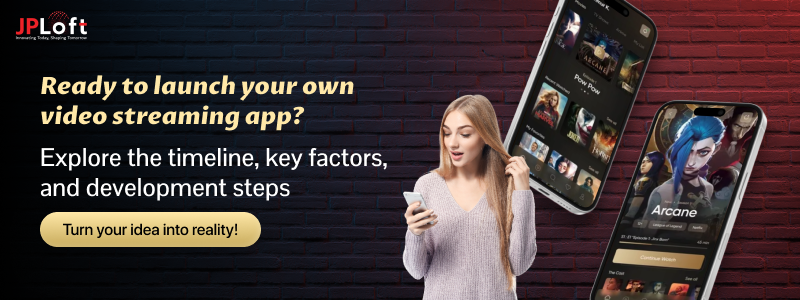
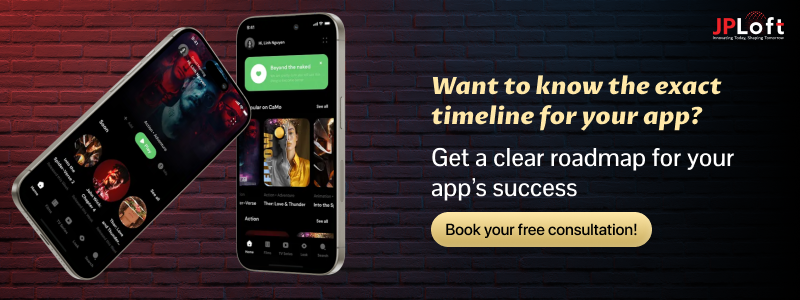

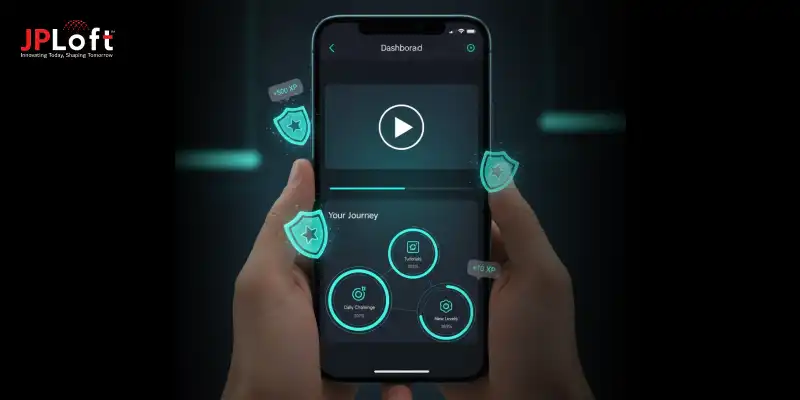
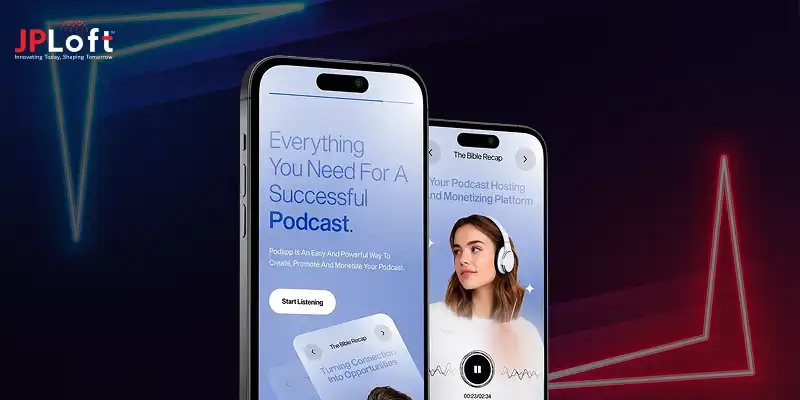
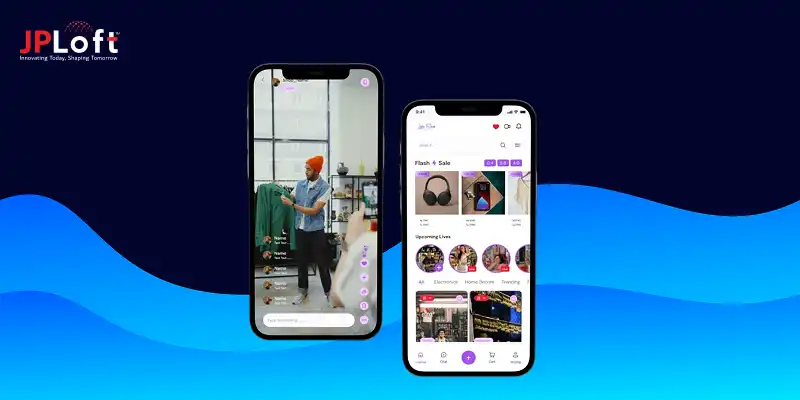


Share this blog